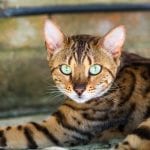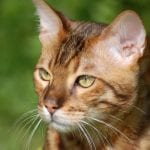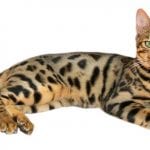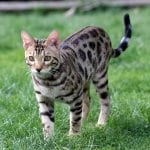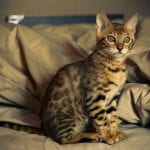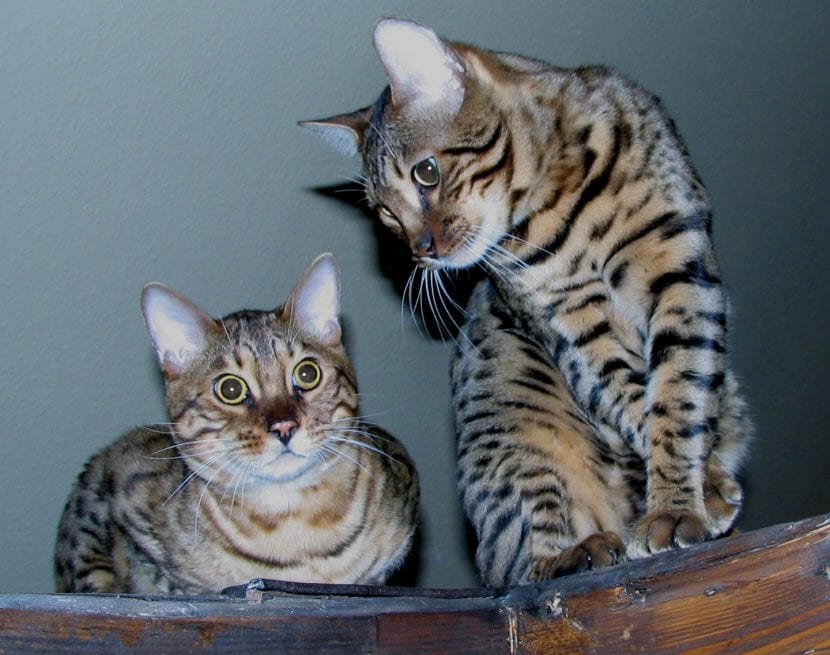
The Bengal cat or Bengali cat is an amazing furry. Its appearance is very reminiscent of the leopard; However, we should not be fooled by his physical appearance, as he has the personality of a tender and adorable domestic cat.
It is a relatively new breed, but it is becoming more and more popular. And it is that, who does not want to have a miniature leopard at home? Let's learn more about him.
Bengali cat history
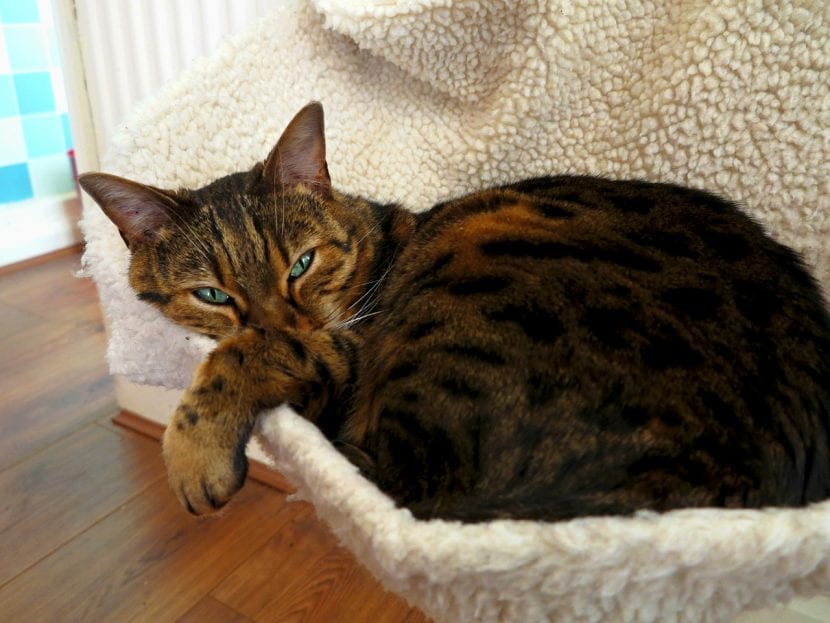
This beautiful cat emerged as a cross between domestic and wild cats, since it started out as a hybrid of the Asian leopard cat (Prionailurus bengalensis) and other breeds of domestic cats: Ocicat, Abisinio, British Shorthair and Egyptian Mau. Thus it was possible to have a wild-looking feline, but with a docile and loving character.
By the 40s there were already Bengal cats in Japan, but the breed did not develop until 20-30 years later, in the United States, where they were first exhibited in 1985. They attracted so much attention that they were soon recognized as breed by the International Cat Association (ICA).
Despite this, there are associations, such as the CFA, which has not accepted it as a breed because it does not accept hybrids. Only fourth-generation Bengalis can participate in their shows with the aim of making the wild genetics more diluted. But the truth is that there are breeders who continue to select specimens and cross them to improve the breed; and in fact today it is no longer necessary to cross leopard cats with domestic cats.
Physical characteristics
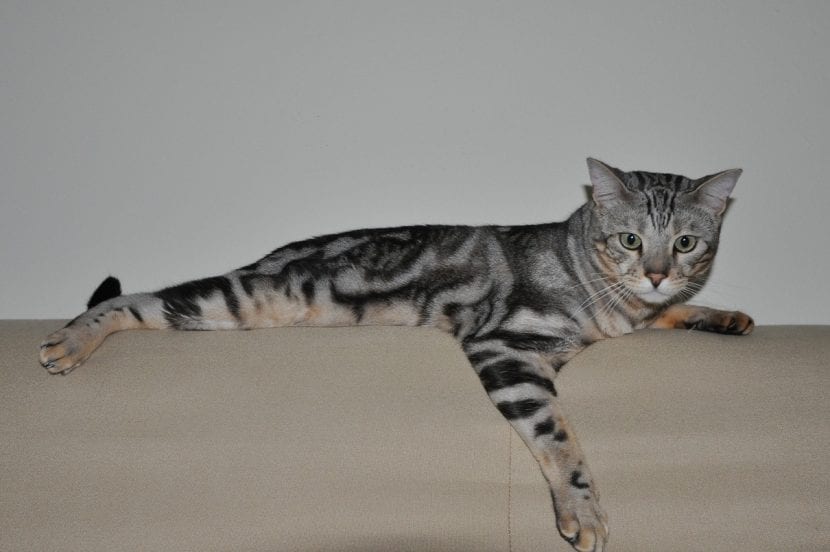
A bengal cat on the couch
The Bengali cat It is a large animal, weighing up to 9kg in the case of the male, and up to 4kg for the female. The body is very robust and muscular, protected by short, soft, thick hair. The head is broad, rounded, with green eyes, small ears and a thick, medium-sized tail.
According to the standard, It is mandatory to have a black tail tip, a mottled abdomen, and footpadsThe coat is only brindle, and the base color can be cream, gold, orange, ivory, yellow or white.
White bengal cat
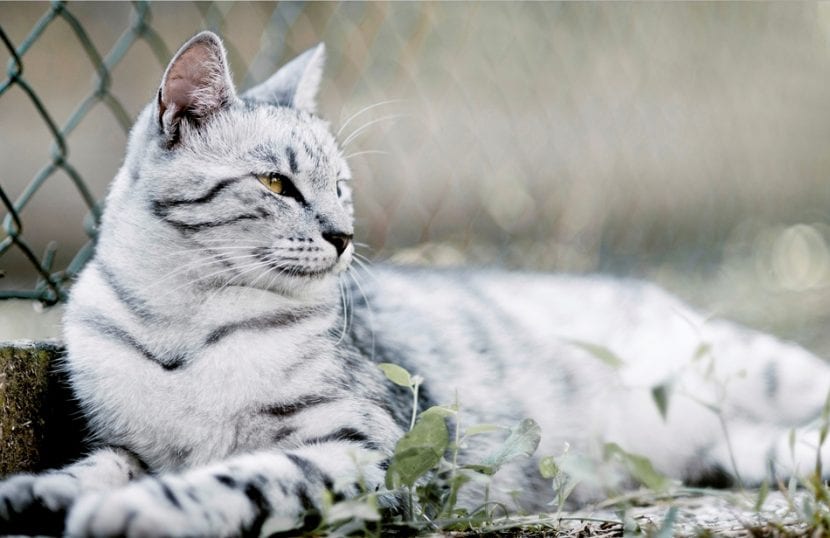
Image - Amolife.com
You remember albino tigers a lot, right? That characteristic feline look, that attitude of self-sufficiency that he adopts while sunbathing ... The white bengal cat is a beautiful animal that you will quickly become the best friend of the whole family. Of course, you should know that being white you have to avoid being exposed to the sun king too long, since otherwise in the long term you could develop skin cancer.
How many years can a Bengal or Bengali cat live?
Provided you receive proper care, can perfectly live 9 and 15 years. Of course, he must live inside the house, since if we let him out, his life expectancy will most likely be reduced.
How is the character?
The Bengali cat is a very special cat. He is very intelligent, loving, and very active. He likes to play, explore, learn new things, and be with his family.. In addition, it is one of the animals that develops a strong bond with a single person, although it comes to love all the humans in the house.
He enjoys jumping, climbing and, although it seems strange, swimming, something he knows how to do very well since it is a quality that he has inherited from the Asian leopard cat, which must hunt its prey in swamps.
How to care for a Bengal or Bengali cat?
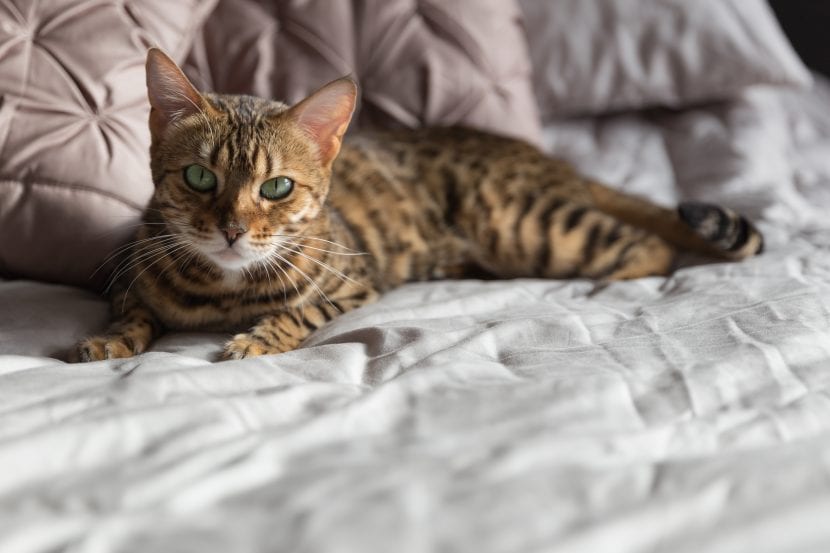
If you decide to live with a Bengal cat you should provide the following care:
Food
Whenever possible, it is highly recommended to give natural foodEither Yum Diet for Cats, or Barf (with the help of a feline nutritionist). It is the food that you will tolerate the best and the one that will bring you the most benefits, the main ones being the following:
- Shiny hair
- Strong, healthy and clean teeth
- Good mood
- Optimal growth and development
- Good health
In the case of not being able to opt for this type of diet, an excellent alternative is to give feed that does not contain grains or by-products, like Applaws, Orijen, Taste of the Wild, among others since these will not cause you any problem. Of course, you should know that a 7kg bag is expensive: it can easily be worth 40 euros, but the amount that should be given is much lower than if it were given a cheaper feed because it contains much more animal protein.
Exercise
The Bengali cat is an especially active cat. It needs to be played with every day, several times. Three or four sessions lasting 10-15 minutes will keep you in shape, and you will be much calmer and happier.
It can also be very interesting to teach him to walk with harness. If you don't know how to do it, don't worry. On this article We explain it to you.
Hygiene
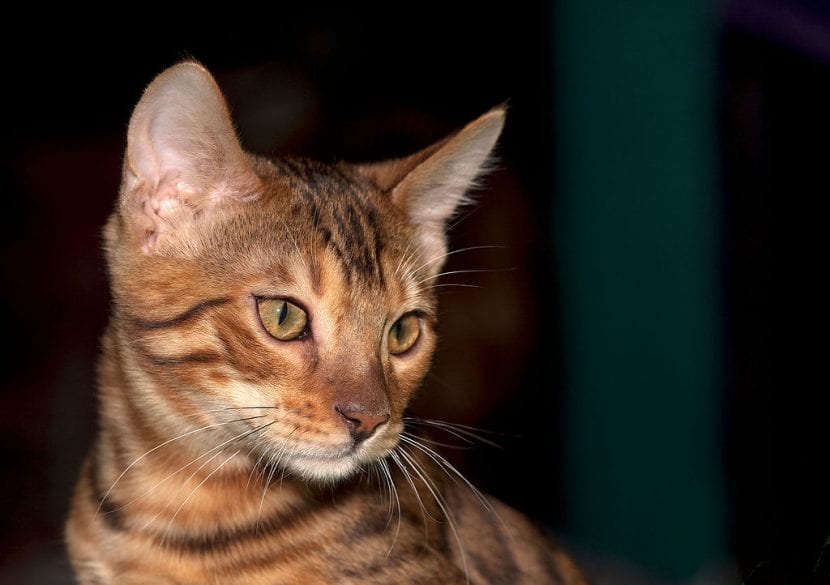
Hair
Hair it has to be brushed once a day with a card or a comb in order to remove dead fur. It is not necessary to bathe it. During the molting season it will be advisable to give malt to prevent too much hair from accumulating on your stomach.
Eyes
The eyes can be cleaned every 3-4 days using a clean gauze (one for each eye) moistened with a chamomile infusion.
Ears
The ears should be cleaned once a week with clean gauze and a vet-prescribed eye drop. You should add 1-2 drops and clean the outermost part of each ear with the gauze.
"Salud"
Like any other cat, during the first year of life it will be necessary to take him to the vet so that you put the necessary vaccinations and to neutering or spaying him if you do not intend to breed it.
As of the year and annually, it is highly advisable to take it back to get booster shots and check it to detect any possible problems.
In addition, every time you suspect that you are ill, you will have to consult a specialist to treat you.
How much is a bengal cat worth?
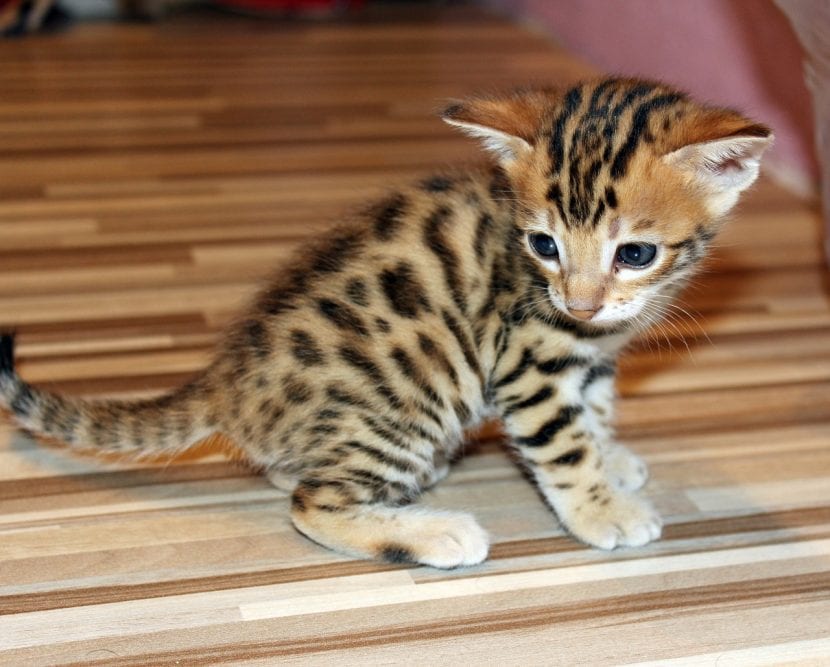
If you really want to live with a Bengali cat, and you think you are prepared to provide all the care that it will need throughout its life, you have to think that a puppy costs around 1500 euros bought from a hatchery.
Photos
We know you love it, so let's end this article by attaching a photo gallery of the Bengali or Bengal cat:
